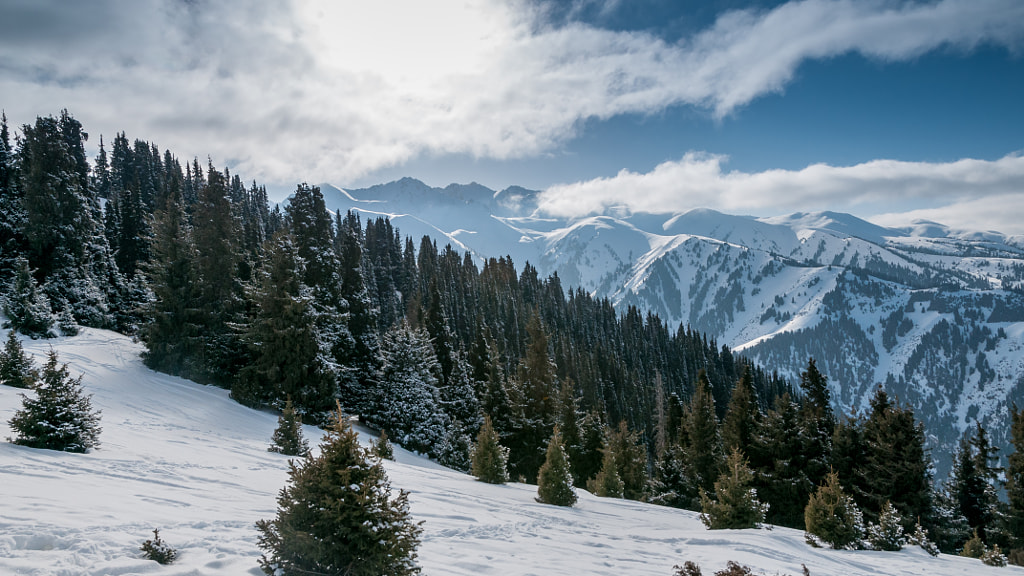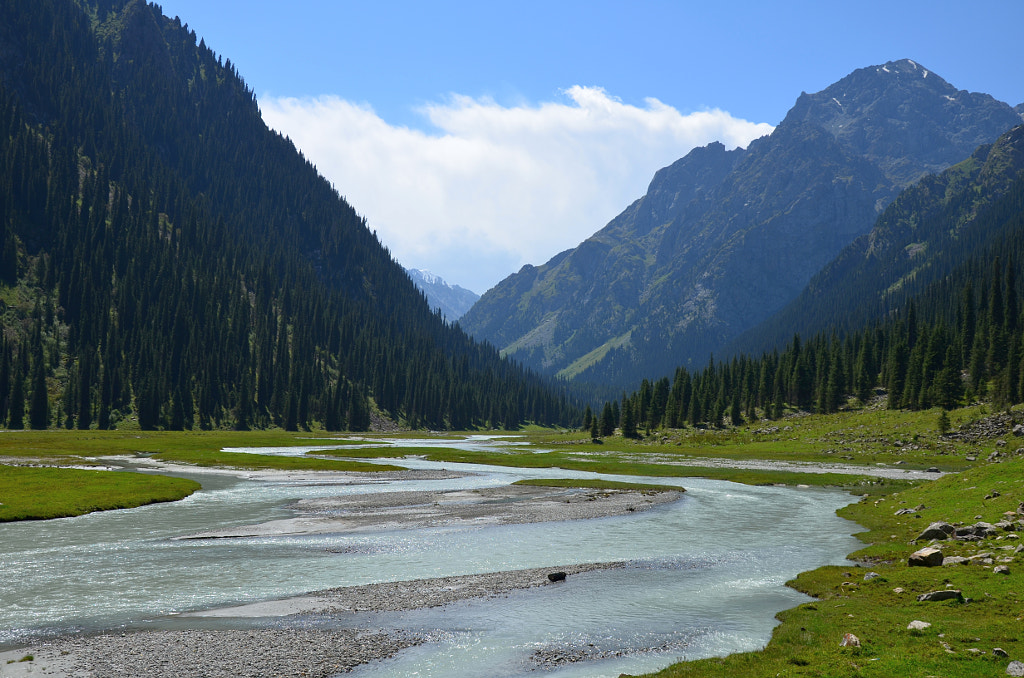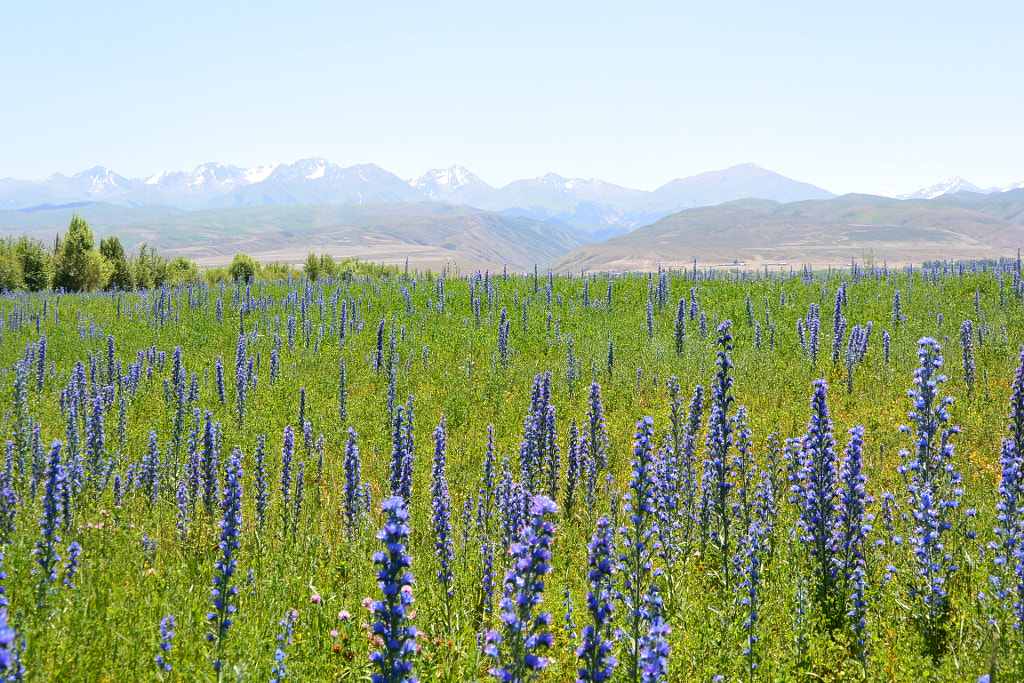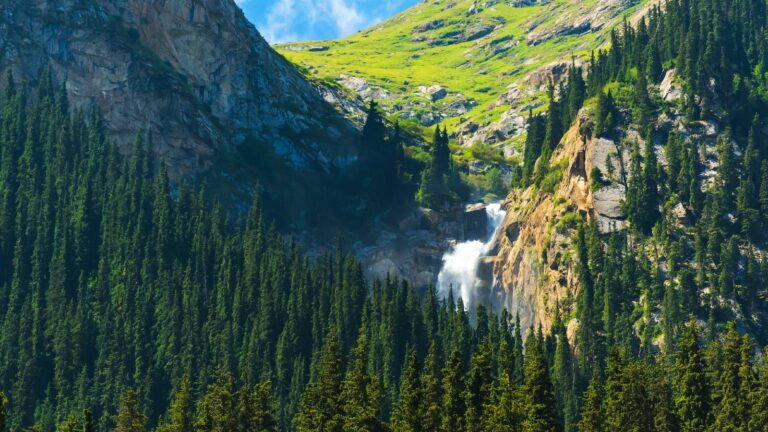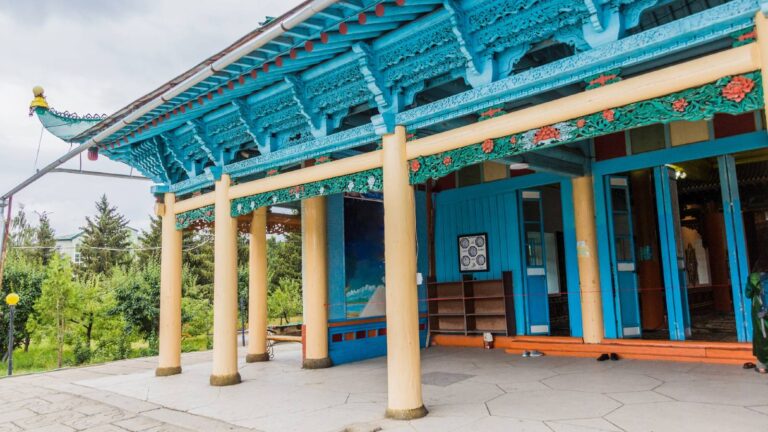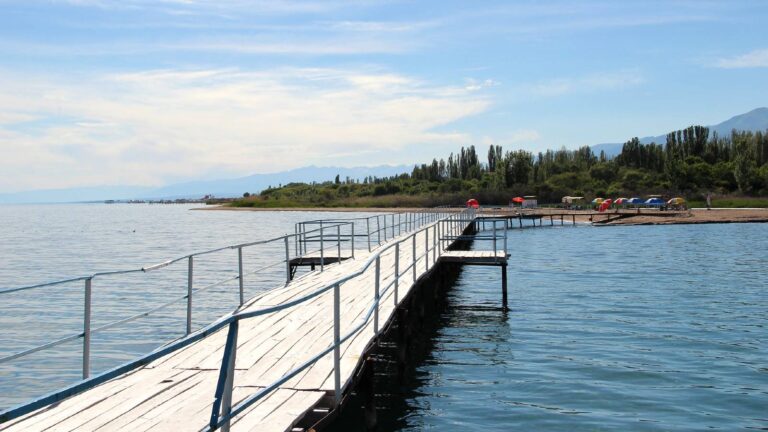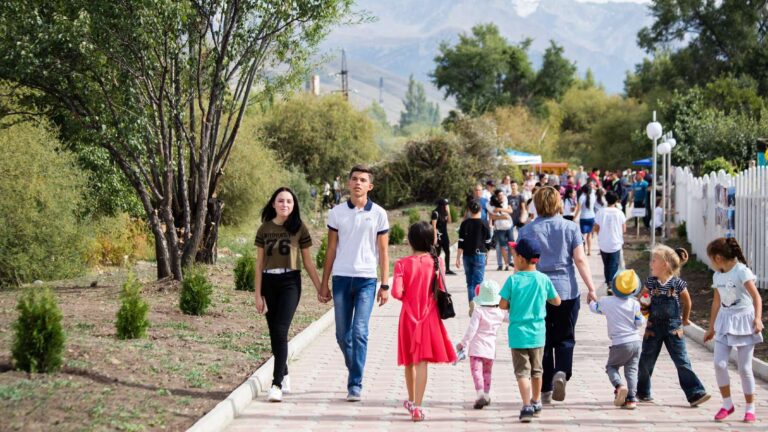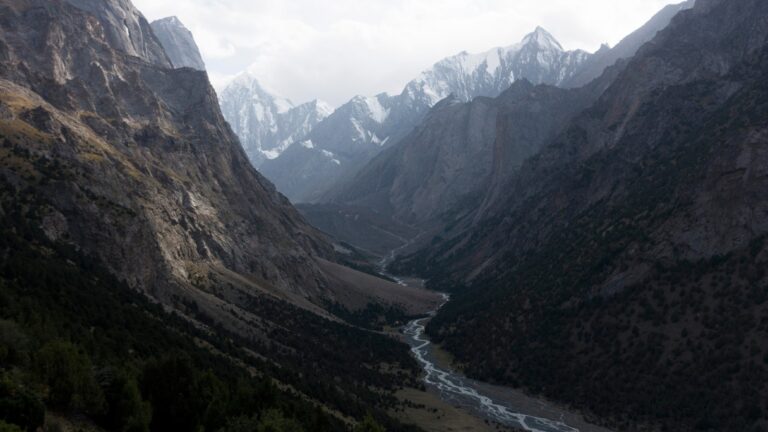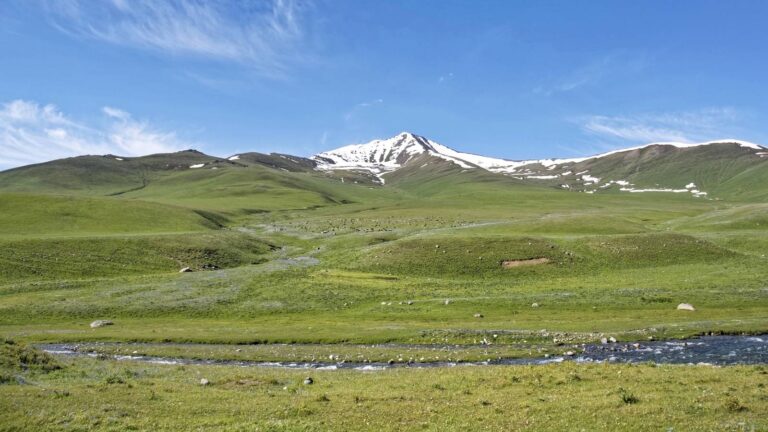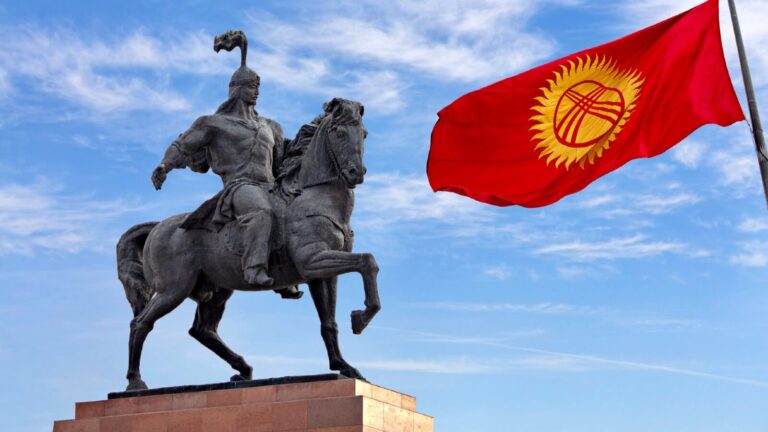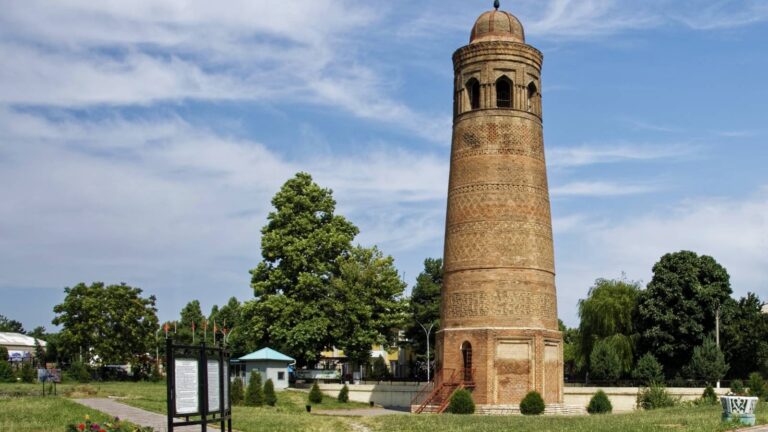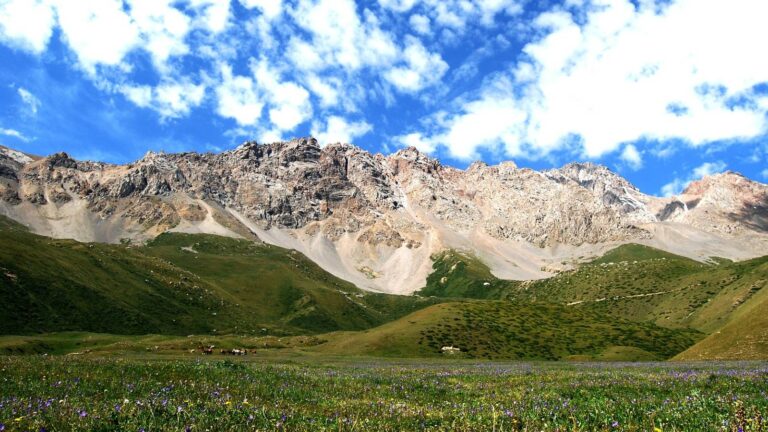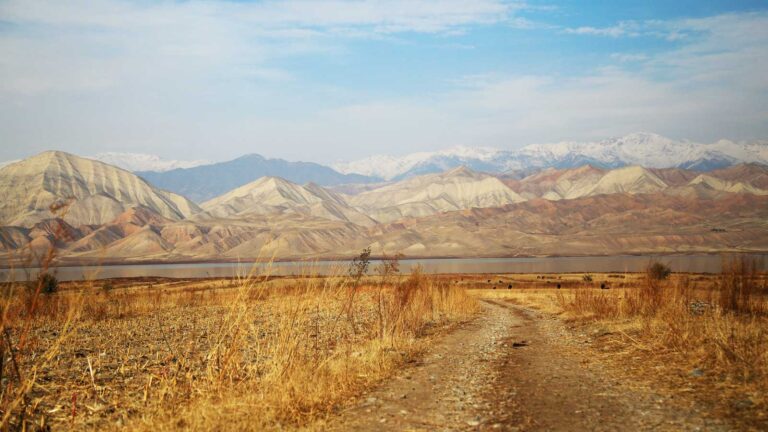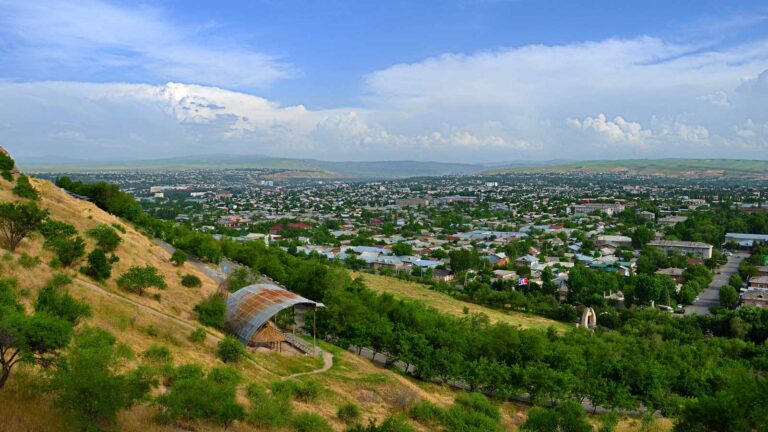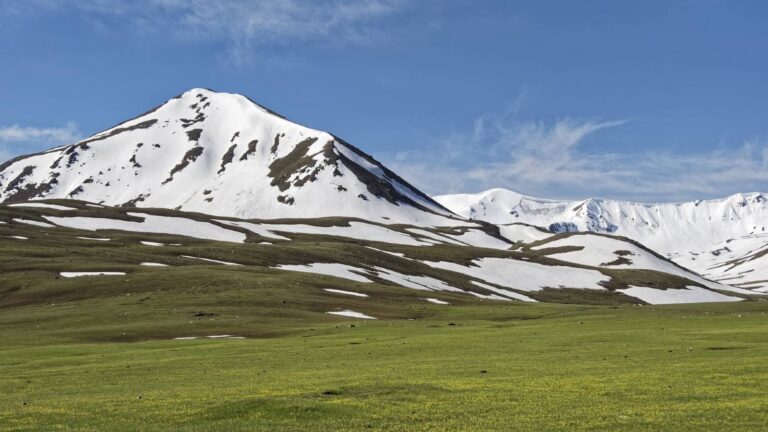Issyk Kul is well connected, with regular shared taxi services from Bishkek, Naryn and Kochkor. A scenic (but very slow) train from Bishkek travels to Balykchy on the western shore, while seasonal flights connect Tamchy airport on the north shore to the cities of Osh and Jalalabad, as well as destinations abroad.
In summer, self-drive is possible from Almaty (Kazakhstan) via the Karkyra border post in Issyk Kul’s eastern Tyup region, saving several hours compared to the drive via Bishkek and passing several of Kazakhstan’s most popular tourism destinations en route.
Popularly known as the “Pearl of the Tien-Shan”, Issyk Kul (literally “hot lake”) takes its name from the fact that it never freezes even in the coldest winters. Domestic tourists join international visitors in Cholpon-Ata, while adventure-minded tourists head for the south shore for hiking and horse trekking to alpine lakes, or cultural exploration of yurt-making communities and demonstrations of the centuries-old tradition of Salbuurun – historical techniques in which hunters work closely with Taigan sighthounds and golden eagles to chase prey.
In winter, eastern Issyk Kul is a booming ski destination. Karakol is the most popular base due to the wide range of accommodation and an international-class ski base. The village of Jyrgalan is a lesser-known favourite for free-ride and catskiing, while several ski-in backcountry yurt camps also regularly book up through the entire season.
Tour operators in Bishkek and Cholpon-Ata organise regular tourist excursions across the northern shore, while Destination Karakol provides guides and transportation across the eastern edge of the region and Destination South Shore specialises in the rest.
Geographical isolation lead different people seeking refuge in the valley of Issyk-Kul. Traces of nomadic tribes’ presence here from the Paleolithic times were found, both on the southern and northern coast. Moreover, vestiges of the Scythian civilizations that lived on the shores of the lake until the 10-12th centuries AD were spotted. The ruins of the ancient Scythian city of Chigu lies under the Issuk-Kul lake’s water and is of great interest to tourist.
The Issyk-Kul region was part of the Great Silk Road, and therefore was widely known in different sources around the world, Chinese, Arab, Persian and European.
Modern history of the region
In 1850-1860 European explorers began to visit the vicinity of Lake Issyk-Kul, Peter Semyonov-Tyan-Shanskiy was among them. A few decades later, the nomadic Kyrgyz presented a petition on annexation to the Russian Empire. Hitherto uninhabited coastal and lowland territories are being developed by settlers from the Russian Empire.
At the eastern end of the lake, near the Karakol River, same-name city was founded, that preserved to this day the original old-Russian architecture layout. Later the city was renamed after Przhevalsk, to honor the famous scientist, explorer and traveler Nikolay Przhevalsky, who bequeathed himself to be buried on the shores of Issyk-Kul. Today, the Przhewalskiy Museum is located on the site of his burial.
In the Soviet times, the Issyk-Kul Region became an all-Union resort area. Many hotels, resorts, and holiday centers were actively built, Bishkek-Balykchy railway was laid, and an airport near the village of Tamchy, that received planes from all parts of the Soviet Union, was opened. Nowadays, the Issyk-Kul Region is home to the World Nomad Games, the main international nomadic sports competition.
Events and Celebrations
Tourism-focussed events are held throughout the year in Issyk Kul, especially during summer. During the first weeks of January, the city of Karakol hosts the Karakol Fair Winter Festival, while in May the town of Cholpon-Ata hosts the Issyk Kul Tourism Fair. July’s Yurt festival celebrates the Kyrgyz tent in Kyzyl-Tuu while Jaichy Yurt Camp holds an Agro-Ethno festival in the same month, and Ton celebrates the Teskey Jeek ethnofest. In July or August both the Kol-Fest Music Festival and CBT’s Birds of Prey Festival kick off in Ton, while the Oimo Handicrafts Festival sets up in Tamchy. In late August, Jaichy holds their own Birds of Prey Festival.
Biennially from 2014-2018 the North Shore hosted the World Nomad Games, a sporting and cultural event highlighting the cultures of nomadic civilisation. While the 2022 and 2024 World Nomad Games are hosted outside of the Kyrgyz Republic, it is expected that the 2026 event will return to its origin.
Combination of sea and mountain climates in the highlands, as well as the relative intactness of most of the mountain territory of the region, attract tourists from various countries.
Most of the Issyk-Kul Region is covered with mountains. The highest point of the Tien Shan is located in the south-east of the region – the Tengri-Tag, Sary-Jaz and Kokshaal-Too mountain ranges, forming Muztag mountain knot, home to famous Khan-Tengri and Pobeda peaks, and Inylchek glacier. The source of the Naryn, largest river in Kyrgyzstan, is located here.
The northwestern part of the region is occupied by the huge Issyk-Kul basin, most of which is occupied by the famous Issyk-Kul lake. The lake is slightly brackish, but despite its low salt content, it creates a marine climate in the valley. This phenomenon is unique for Central Asia, being geographically the most remote from the seas and oceans. Despite the height the region has very mild winters and in summer, on the contrary, it is not very hot.
The lake is surrounded by two large ridges – Kyungei-Ala-Too in the north and Terskey-Ala-Too in the south. The climate in the Issyk-Kul Region is moderate continental, warm and dry. Average January temperatures: Tamga -2°C, Cholpon-Ata -3°C, Karakol -6°C. Average temperature in July: +17°C.
Tourism has been the most important economic factor in Issyk-Kul, with many tourism facilities going back to the former Soviet era. With about 23,000 accommodation beds, Issyk-Kul accounts for 78.7% of all domestic and international tourist arrivals of the Kyrgyz Republic.
With respect to the recreational complexes maintenance, industry, agriculture, construction, transport and other sectors of the region will be developed in the long run. Ore mining is promising in the region. Deposits of gold, tin, copper, lead, polymetal, tungsten, tantalum, niobium, molybdenum and other minerals were discovered in the area of Sary-Zhaz River.

